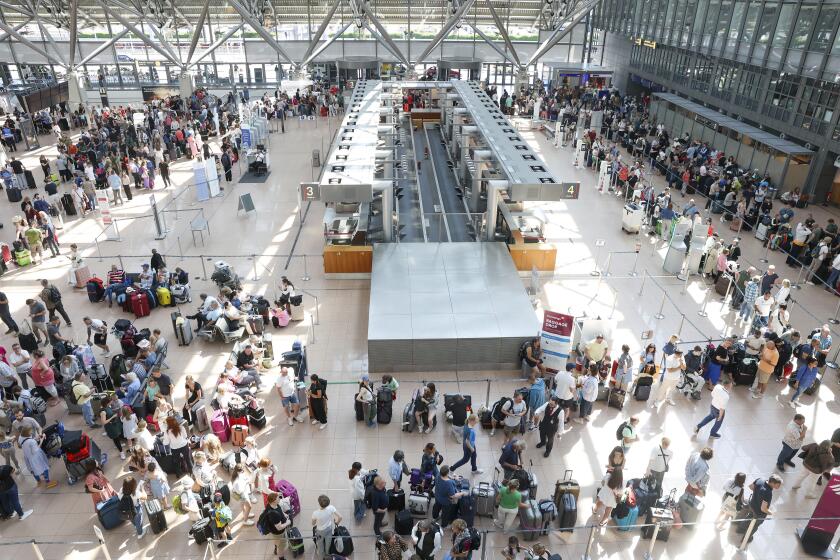Wheelwright Stuff: Hobbyist Stays Busy Repairing Wagons
The winding driveway to Brandon Houdashelt’s house is lined with wooden carriage wheels, but they’re not his best or most impressive.
Inside a cluttered workshop tucked in the Sierra Nevada foothills east of Fresno, antique carriage and buggy wheels lean against benches waiting for his deft touch.
A self-trained wheelwright, the 69-year-old Auberry man labors in his open-air shop for about six hours a day, working on wheels from the last century.
His specialty is restoring damaged ones, but he also builds them from scratch.
Houdashelt’s customers are members of hobby groups who ride horse-drawn carriages and wagons in shows and parades.
‘A Funny Thing’
“Wheels are a funny thing. There are very few people who know how to do wheels,” said Houdashelt, dressed for work in a pair of blue-and-white striped bib overalls. “I’m no smarter than anyone else, but I know how to work them.”
Houdashelt bought a decrepit wagon about 35 years ago, intending to restore it when he had the time.
“As I look at it now, it was rather amateurish,” he admitted. But he was intrigued by the work.
He and his wife restored a doctor’s buggy in 1970, and the former lumber truck driver retired seven years ago at age 62 with the idea of devoting himself to his hobby.
“I never could make any money on it because it took so much time,” he said, noting that a good sanding of a single wheel can take eight hours. “What few dollars I make out here enable me to buy some gasoline to take my motor homes to some of these horse shows.”
Houdashelt displays an 1884 John Deere wagon and two mules at special exhibitions around the state and picks up work as he goes.
He has about 200 wheels scattered around his property, and his shop is brimming with spare spokes made from hickory and oak, rolls of solid rubber and odd piles of wood.
But his supplies never seem to be adequate.
“It seems like whenever somebody brings a wheel in, I have to order something,” he said.
At first, Houdashelt made his own spokes, but he later learned he could obtain pre-cut spokes, bent wood for rims and rubber from Amish communities in Canada, Pennsylvania and Ohio.
He started using power tools for the first time a month ago, primarily for work on heavy wagon wheels. But much of what he does is performed with antique and homemade hand tools the way wheelwrights of old did.
The trickiest part of his job is sealing a solid rubber sheath to wheel rims. Houdashelt uses a machine that looks like a garage-door opener to tighten wires embedded in the rubber to grip the wheel.
The precise fit of spokes, rim and rubber are all-important.
“As long as I’ve been doing this, no one has ever worn it out,” Houdashelt said. “The only time I’ve ever had to replace it is where someone had an accident and wrecked the wheel.”
Consults Own Library
If he runs into a problem identifying wheels or carriages, he can consult his library.
“I’ve collected close to 100 books on anything that has anything to do with horse-drawn carriages or early American transportation,” he said.
Nine carriages in various stages of disrepair sit in a shed next to Houdashelt’s house, waiting for him to find some time to restore them.
Houdashelt acknowledges that his preoccupation with an outmoded form of transportation “seems odd.”
But he quickly added, “I think it’s wonderful myself. I’m not ashamed to say I’m proud of what I’m doing.”
More to Read
Sign up for Essential California
The most important California stories and recommendations in your inbox every morning.
You may occasionally receive promotional content from the Los Angeles Times.






